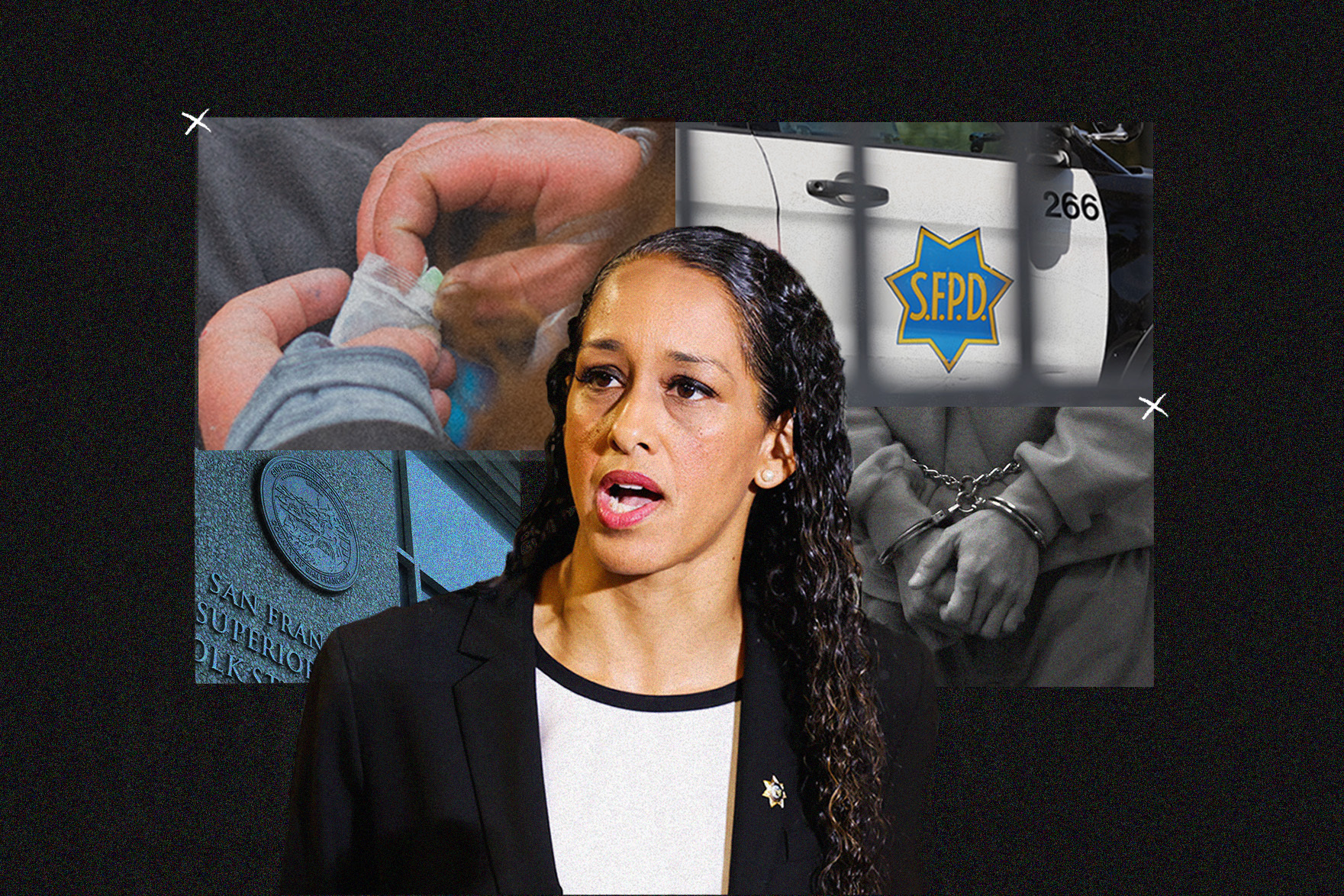Newly appointed District Attorney Brooke Jenkins announced a triad of policy changes on Wednesday aimed at seeking harsher penalties against alleged drug dealers, disputing the option of diversion for some defendants and reserving treatment for people addicted to drugs—rather than the dealers selling them.
In practice, however, drug-related cases must navigate a labyrinth of state laws—not to mention opposition from the Public Defender’s office—for Jenkins’ goal to succeed. Her policy hinges on weeding out drug addicts from professional dealers, when the distinction isn’t always easy to prove: Drug users, who would be directed to drug court under Jenkins’ plan, may sometimes participate in the city’s drug trade as a means to support their addictions.
“What we can’t allow to have happen is that [drug court is] abused by people who don’t want to change their lives,” Jenkins said.
But getting to drug court is complex, and the process presents challenges that stand in the way of Jenkins’ stated goal of using the threat of criminal consequences to disrupt the city’s drug trade.
Here’s the breakdown:
Jailed, but for How Long?
Once someone is arrested for selling drugs, the District Attorney’s office has 72 hours to file charges.
The Pretrial Diversion Project conducts a test to determine whether or not a person can be safely released on their “own recognizance,” meaning they sign an agreement to return to court. That process can end a person’s detainment before the DA’s office has had time to file charges.
Jenkins said that, in extreme cases, her office may seek pre-trial detention. Typically that option is reserved for those who pose a risk to public safety or are a flight risk, but Jenkins said that her office could use this option in cases of repeat drug offenders: “Many of them, they just return back right to the same cycle,” she said on Wednesday.
Whether or not a drug defendant is detained, it can be a months or even years-long process before their case is resolved.
The Five Gram Threshold
During the initial arraignment, or at any point in the proceedings, a public defender or private attorney can request a state evaluation of their client to determine eligibility for diversion.
Jenkins has said that under her former boss Chesa Boudin, the District Attorney’s office abused diversion programs by inappropriately sending drug dealers to those programs.
By contrast, Jenkins’ new drug policy prohibits her office from conceding to diversion for defendants who are charged with possession of over five grams of fentanyl or other drugs. But that threshold is likely to meet stiff resistance from public defenders, who argue that holding five grams hardly indicates that someone is a dealer.
“It’s just arbitrary when you start excluding people based on the amount of drugs,” said Brian Pearlman, an attorney with the Public Defender’s Office.
Jenkins said that her office will evaluate cases individually, however, and aim to weed out addicts by using drug tests. Defendants “can submit, if they choose, to a drug test that often will demonstrate whether or not they’re an addict,” Jenkins said.
Inside Drug Court
If the judge decides that a person is fit for diversion, the case heads to collaborative court, where the district attorney, the public defender, a judge and a case manager negotiate terms.
In drug cases, the options are narrowed down to two programs: drug court and behavioral health court.
Instituted locally in 1995, drug court requires defendants to plead guilty in many cases before they participate, but the charge is reduced or tossed out if they successfully complete the program. However, public defenders can choose to advocate for a criminal trial with the estimation that liberal-leaning local juries will find their clients not guilty.
At drug court, defendants are connected to case managers and ostensibly required to comply with an individually tailored treatment plan that could include looking for employment, submitting to random drug tests and regularly attending Narcotics Anonymous meetings. At the defendant’s required court hearings, an assistant district attorney, their public defender and a judge call into the courtroom over Zoom.
Defendants are called up to a podium to give updates on their progress. Those who miss their court date are either excused, depending on the reason given by the public defender, or issued a bench warrant with a bail of $5,000.
Those who show up, and have complied with their treatment plan, are greeted with a round of applause. If they’ve made especially good progress, the judge may ask an assistant to give them a gift card to CVS, Subway or Starbucks.
But a referral to drug court is just the beginning of what can be a long road for those with addiction issues, added Pearlman.
“Everybody’s really trying to help with these courts…But trying to get someone who has a problem to get into treatment, that’s a whole process,” Pearlman said. “They start losing interest in trying to help themselves and there’s just a lack of resources.”
